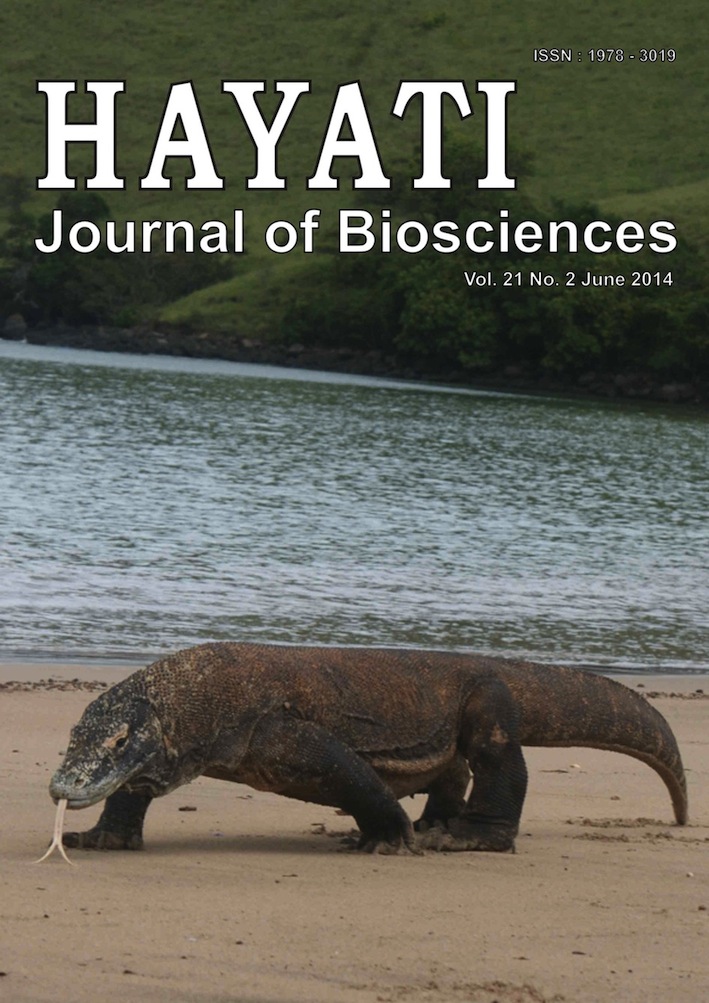Molecular Sex Determination of Captive Komodo Dragons (Varanus komodoensis) at Gembira Loka Zoo, Surabaya Zoo, and Ragunan Zoo, Indonesia
Abstract
Captive breeding of endangered species is often difficult, and may be hampered by many factors. Sexual monomorphism, in which males and females are not easily distinguishable, is one such factor and is a common problem in captive breeding of many avian and reptile species. Species-specific nuclear DNA markers, recently developed to identify portions of sex chromosomes, were employed in this study for sex determination of Komodo dragons (Varanus Komodoensis). Each animal was uniquely tagged using a passive integrated micro-transponder (TROVAN 100A type transponders of 13 mm in length and 2 mm in diameter). The sex of a total of 81 individual Komodo dragons (44 samples from Ragunan zoo, 26 samples from Surabaya zoo, and 11 samples from Gembira Loka zoo) were determined using primers Ksex 1for and Ksex 3rev. A series of preliminary PCR amplifications were conducted using DNA from individuals of known sex. During these preliminary tests, researchers varied the annealing temperatures, number of cycles, and concentrations of reagents, in order to identify the best protocol for sex determination using our sample set. We thus developed our own PCR protocol for this study, which resulted in the amplification of band A in females and band C in males. Results from band B, however, turned out to be non-determinative in our study because, for females, band B was not always visible, and for males sometimes a similar, but lighter band was also amplified, making interpretation difficult. In this study, sex determination was based mainly on the difference in size between the female-specific 812 bp fragment and the homologous, longer fragment amplified for males.
Downloads
HAYATI J Biosci is an open access journal and the article's license is CC-BY-NC. This license lets others distribute, remix, tweak, and build upon author's work, as long as they credit the original creation. Authors retain copyright and grant the journal/publisher non exclusive publishing rights with the work simultaneously licensed under a https://creativecommons.org/

























.png) IPB University
IPB University Department of Biology
Department of Biology The Indonesian Biological Society
The Indonesian Biological Society 

